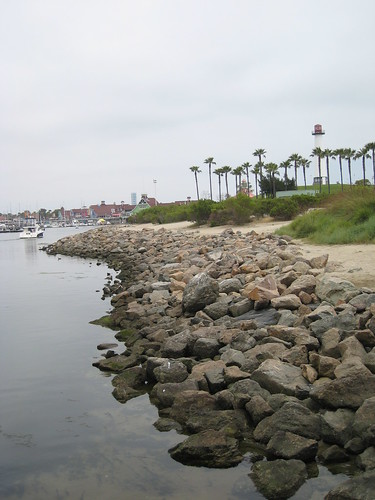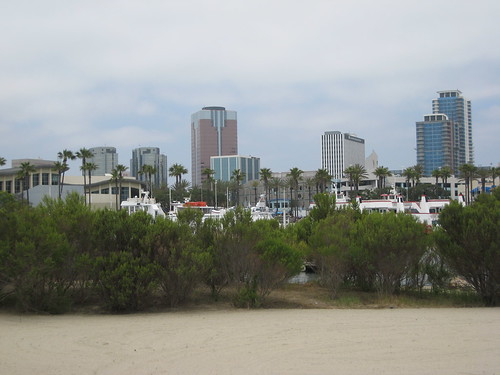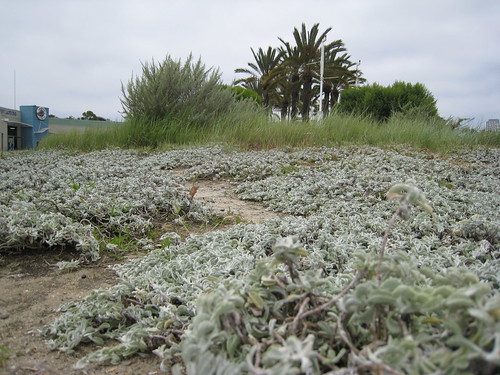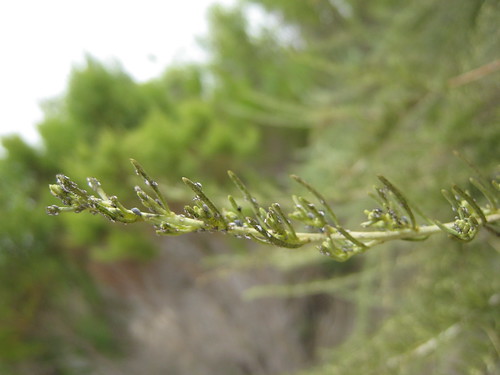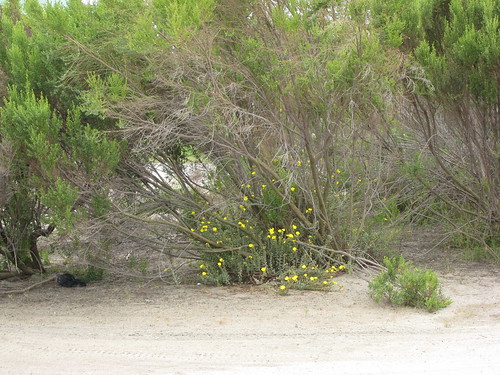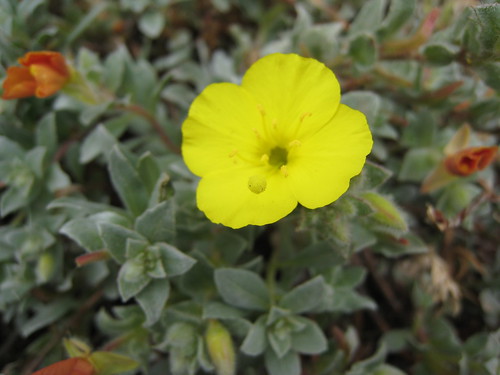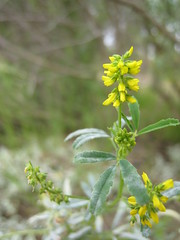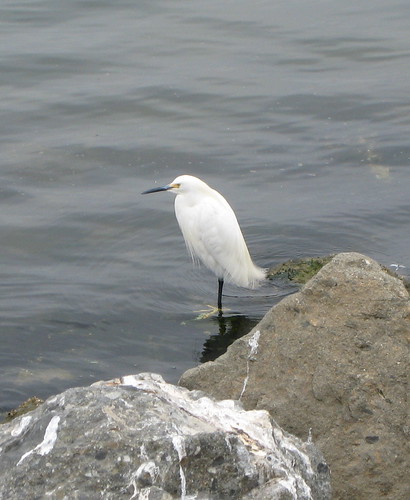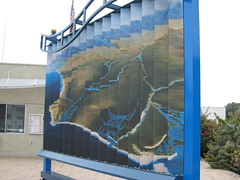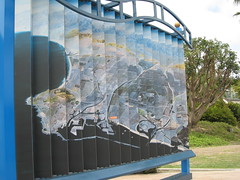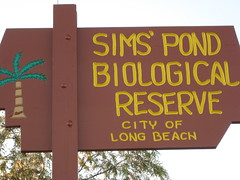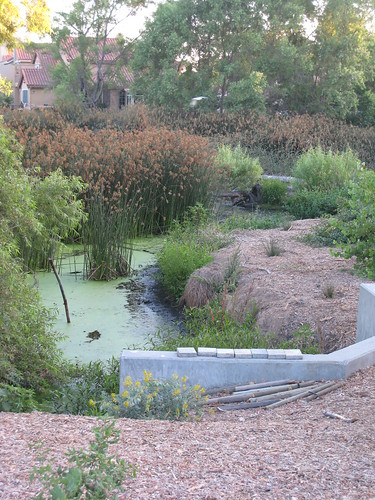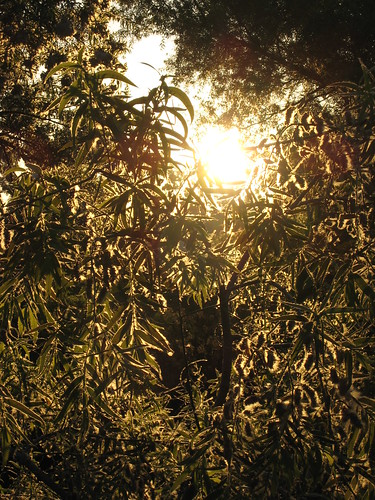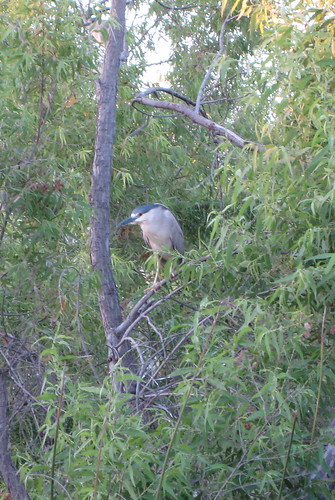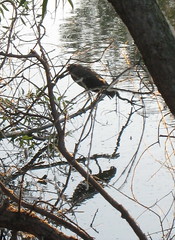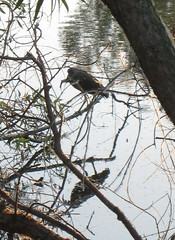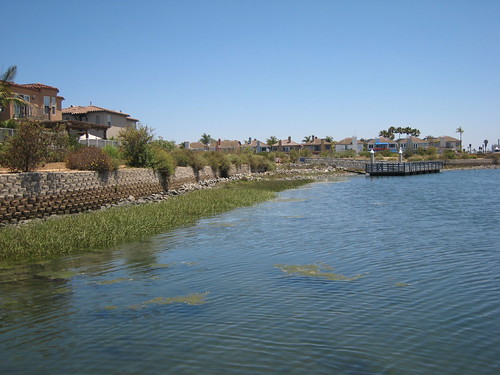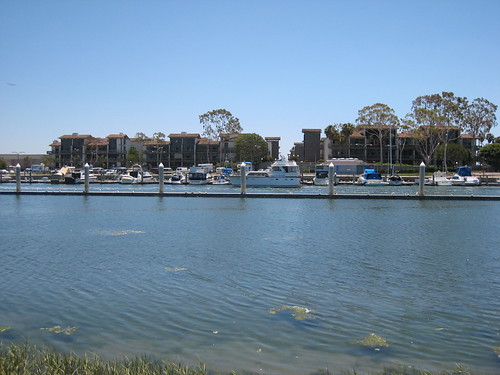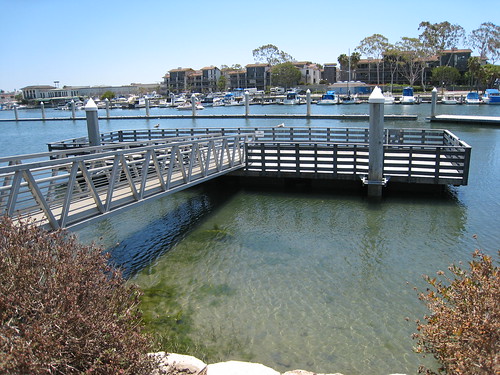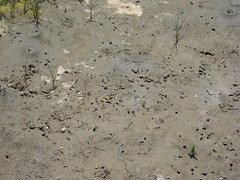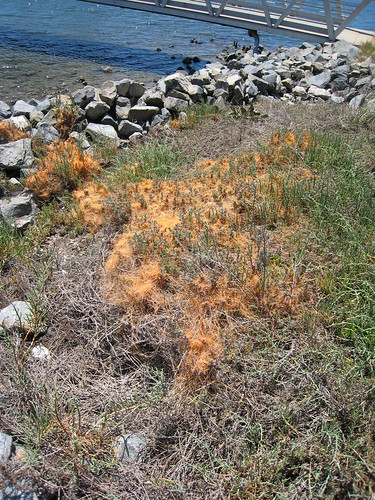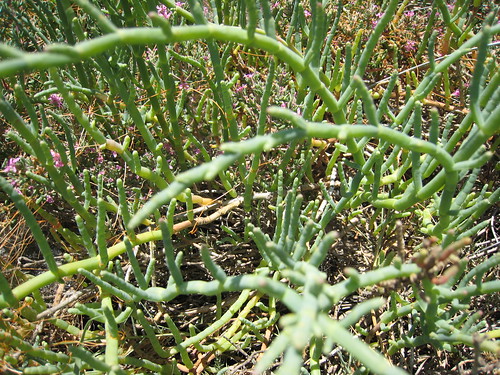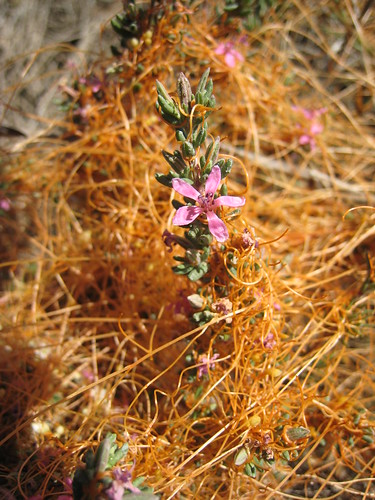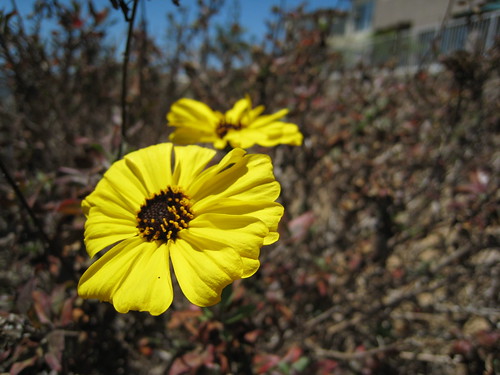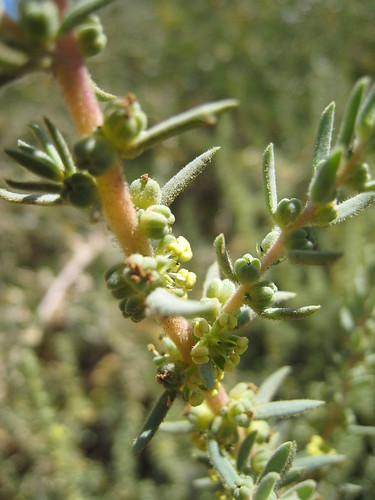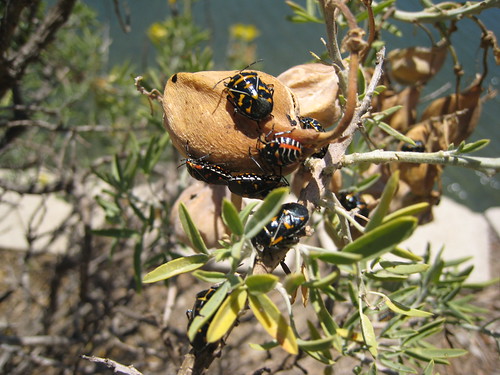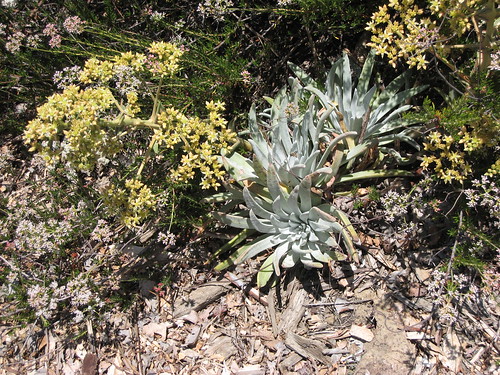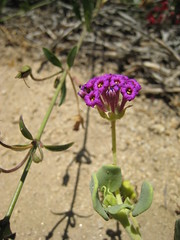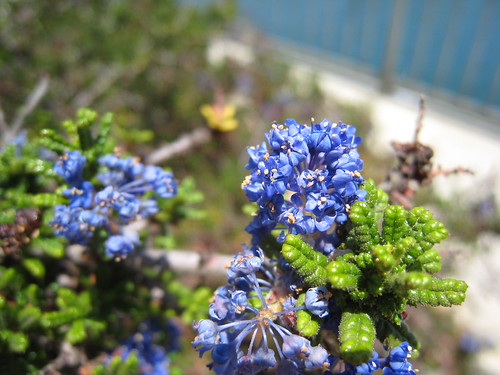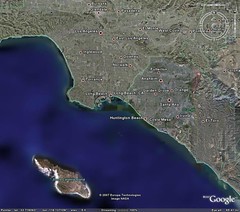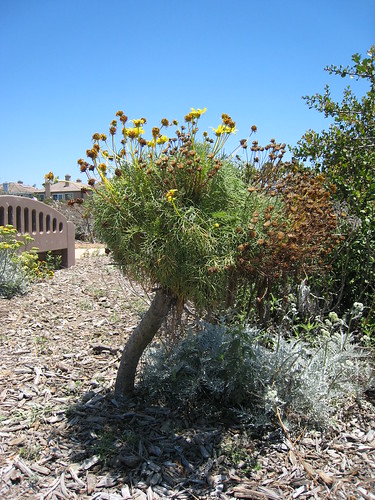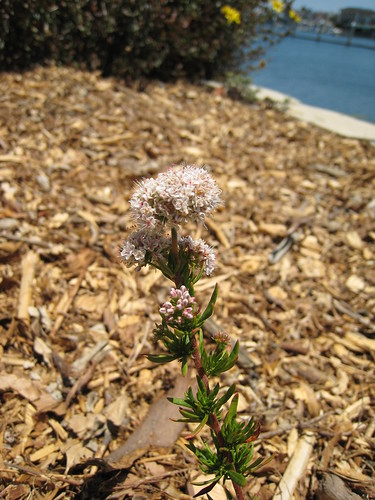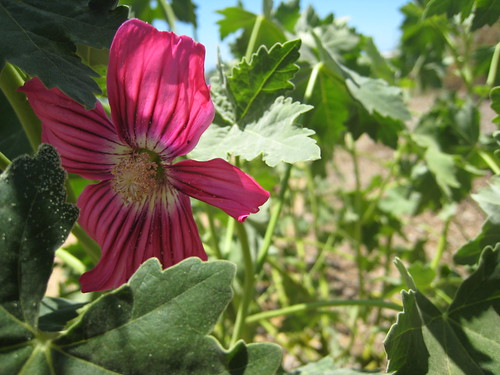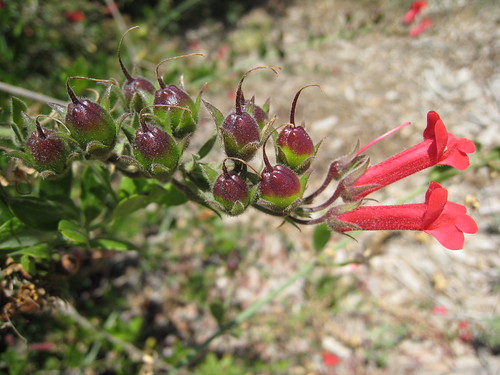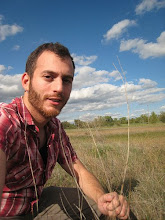Colorado Lagoon
Regrading of slopes, creation of new salt marsh habitat

Slopes may be regraded to restore tidal flow to many areas that are now maintained as lawn.
Cost: High, although fill disposal would be minimal.
Chance of success: High--restoring tidal flow would ensure establishment of salt marsh plants.
Benefits: High.
Risks: Loss of areas of active recreation. New wetland areas may accumulate trash.
Restore native vegetation on bluffs

Remove nonnative iceplants and replace with a native bluff community.
Cost: Low
Chance of success: Moderate. Exotic plants may re-establish. Maintenance would be required.
Benefits: Moderate to high. No native habitat currently exists at Colorado Lagoon.
Risks: Maintenance is required to avoid re-establishment of non-native vegetation.
Golden Shores Preserve
Restore coastal sage-scrub vegetation to upland areas
Cost: Low
Chance of success: High. Current horticultural plants unlikely to re-establish.
Benefits: Moderate: No native upland habitat currently exists in the area.
Risks: Establishment of non-native species.
Increase public access to wetland areas

Remove fence, create new aesthetic fencing and/or boardwalk to improve access to the wetlands. Long Beach Parks identified this as a need in the Riverlink plan for the Los Angeles River.
Cost: Moderate
Chance of success: High.
Benefits: High. Increasing access to the marsh will improve awareness and appreciation of wetland habitats, decrease illegal dumping.
Risks: Increasing access may lead to trampling, littering (although major illegal dumping will be decreased).
Long Beach Greenebelt
Expand restoration area

Remove nonnative vegetation and replace with native coastal sage-scrub habitat between 4th and Ximeno streets. This area currently contains turf in very poor condition.
Cost: Moderate to low.
Chance of success: High.
Benefits: High. May reconnect sage-scrub with wetland habitats at Colorado Lagoon.
Risks: Loss of active recreation areas. Establishment of nonnative species must be prevented through continued maintenance.
Increase environmental education
Create interpretive signs, trail guides.
Cost: Low
Chance of success: High.
Benefits: High.
Risks: None.
Jack Dunster Reserve
Minimal opportunities for restoration. This park is pretty well built-out and maintained.
Marine Stadium Marine Reserve
Restore coastal sage-scrub vegetation to upland areas

Cost: Low
Chance of success: High
Benefits: Moderate to low. Currently no upland habitat exists at the site.
Risks: Low to none. Proper landscaping may be required to overcome objections to appearance of nonnative vegetation.
Regrading of slopes, creation of new salt marsh habitat
Slopes may be regraded to restore tidal flow to many areas that are now maintained as lawn.
Cost: High.
Chance of success: High--restoring tidal flow would ensure establishment of salt marsh plants.
Benefits: Moderate to high. Not too much area for expansion of intertidal areas.
Risks: Loss of areas of active recreation. New wetland areas may accumulate trash.
Bluff Park
Increase restoration area

Remove nonnative iceplant and replace with native vegetation east of current restored area. Restore isolated patches west of current restored area. Stabilize slopes.
Cost: Moderate.
Chance of success: Moderate to high.
Benefits: Moderate
Risks: Expand feral cat population. Maintenance required to prevent re-establishment of nonnative vegetation.
Control feral cat population

Use trapping, outreach to reduce feral cat population.
Cost: Low.
Chance of success: Low.
Benefits: High. Feral cats are a major threat to native wildlife.
Risks: Most effective control measures (e.g., trapping and killing) unacceptable to many people. Maintenance required to avoid re-establishment of feral cat populations.
The Beach
Improve tidal flushing by removing breakwater.
Cost: Very high
Chance of success: Moderate to high.
Benefits: Increased flushing will remove trash and reduce levels of harmful bacteria at the beach. Some wildlife may increase as well.
Risks: Unclear how much improvement can be expected. Some breakwater must be maintained for safety of the port.
Shoreline Park
Expand restored area into areas currently maintained as lawn or landscaped vegetation (e.g,. eastward and around the edge of the peninsula).
Cost: Low.
Chance of success: Moderate to high.
Benefits. Moderate. Very little native habitat currently exists at the site.
Risks: Loss of recreation areas. Increased vagrancy due to "unkempt" appearance of landscape. Possible increase in feral cat populations. Natural dynamic dune ecosystem unlikely to be created at this site.
Sims Pond
Increase public access
Safe access may be increased by opening gates and creating a trail, boardwalk, or viewing platform. Create interpetive materials.
Cost: Moderate to low.
Chance of success: High.
Benefits: Moderate. Access will probably always be restricted due to proximity of homeowners.
Risks: Increased disturbance of neighbors and wildlife. Increased dumping in the pond.
